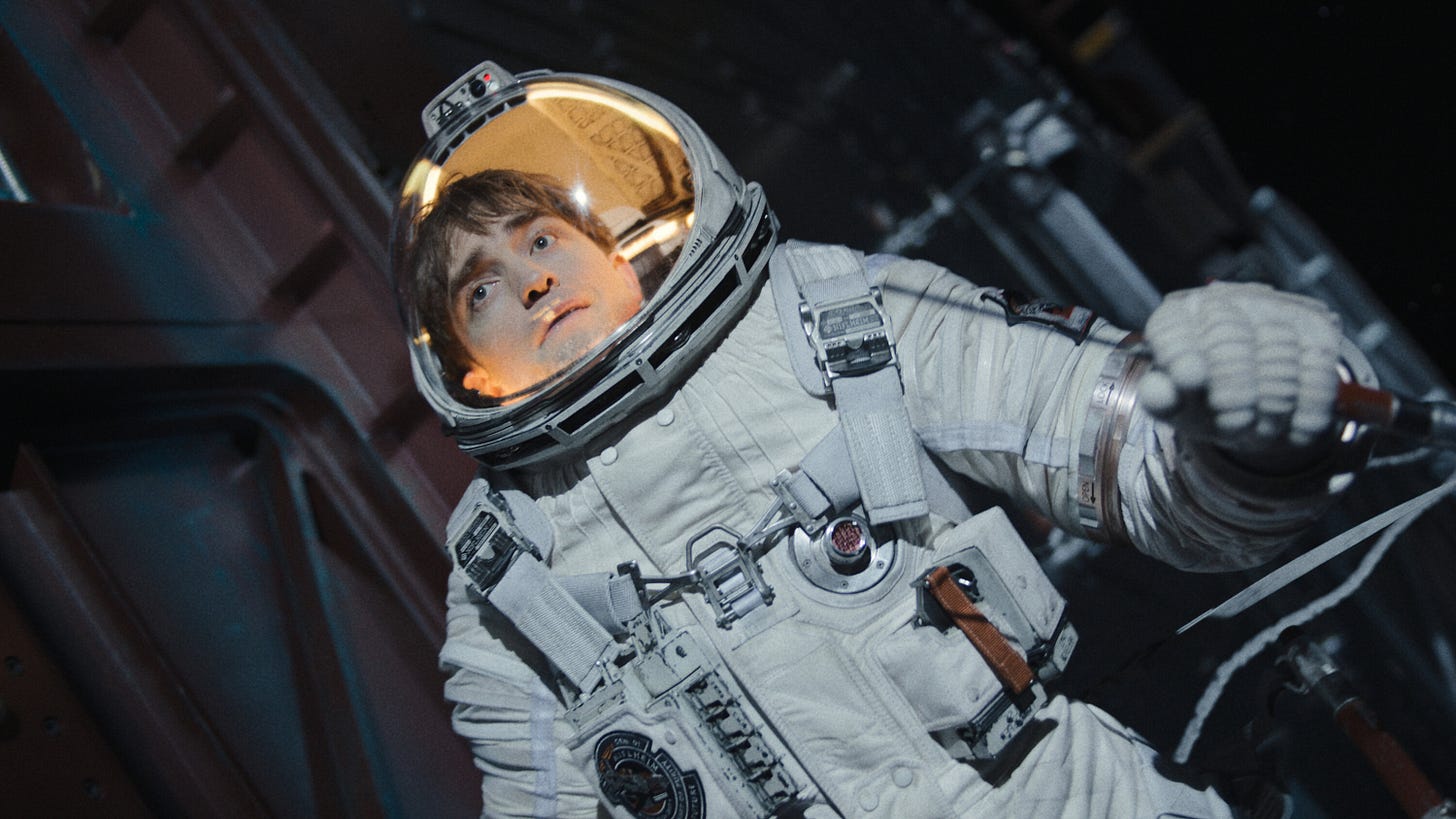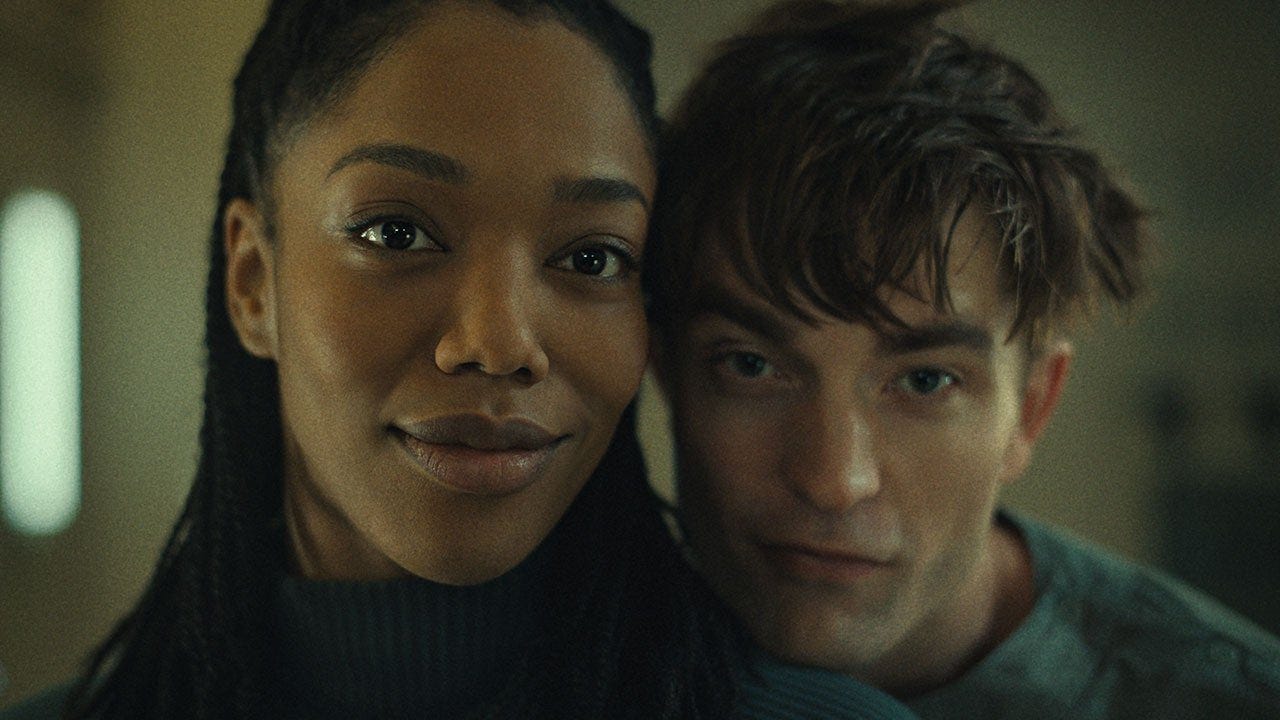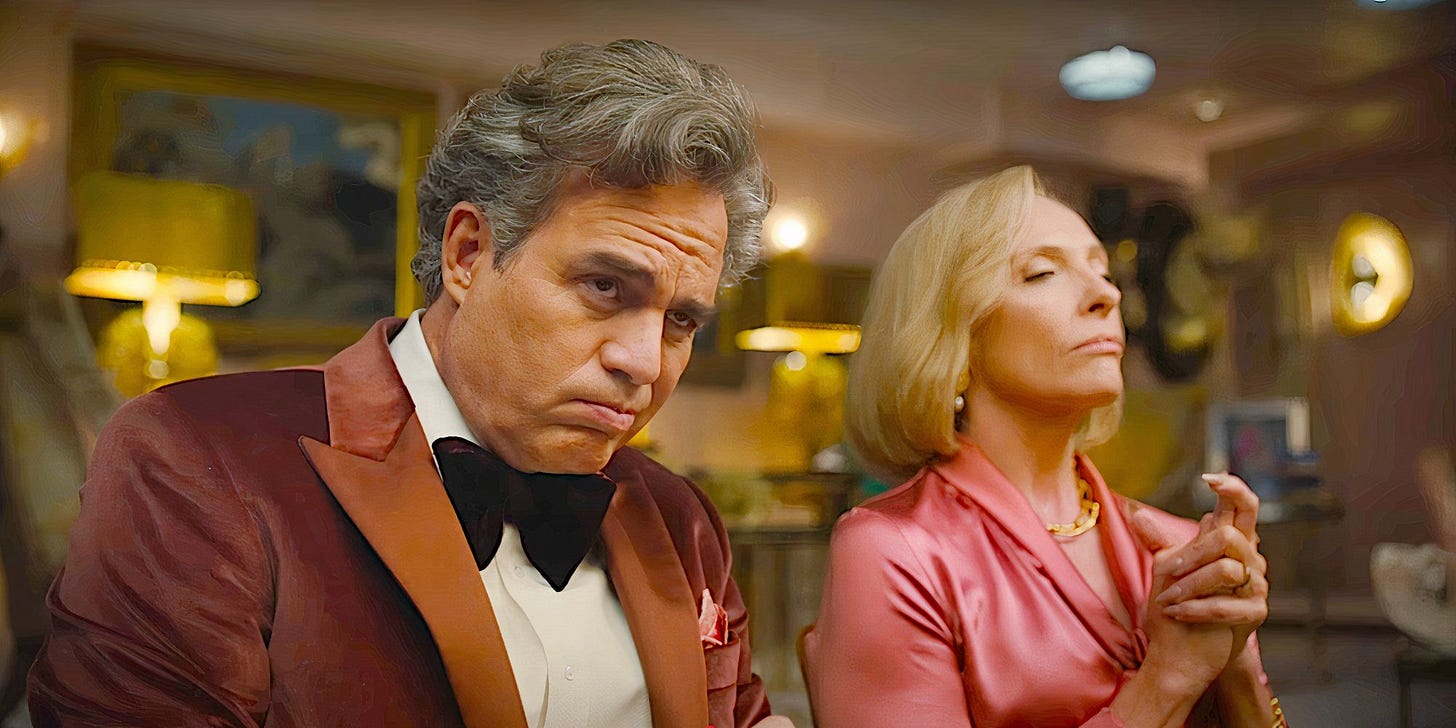Mickey 17 Is Not Your Average Trump-Era Satire
Bong Joon Ho's latest cinematic spectacle is wonderfully unsubtle. And there is nothing wrong with that.
On February 9th, 2020, Jane Fonda stood on stage at Los Angeles’s world-famous Dolby Theatre and announced Bong Joon Ho’s Parasite as the winner of that year’s Academy Award for Best Picture. It was one of the most joyous nights in recent awards history, with the cast and crew’s excitement reaching through the screen and embedding itself deep within the hearts of every viewer at home. You would be hard-pressed to find a self-proclaimed “movie fan” that does not remember this moment. It was a watershed moment for international film, with Parasite being the first non-English language film to win Best Picture. At the time of writing this piece, it is still the only film of its kind to win said award. As momentous as this night felt, it came as somewhat of a surprise to viewers and industry members alike.
The average moviegoer had likely never even heard of Parasite before its Best Picture win, evident in the fact that it received the largest post-Oscars box office bump in over a decade. I’ll be the first to admit that I had not seen Parasite before the win. Though I was curious about the hidden gem that took the world by storm and won four Oscars, I was perhaps even more curious about the film’s director, South Korean filmmaker Bong Joon Ho. My first impression of him was a photo that circulated widely of him mimicking a kiss between his two Oscars statuettes (which could have been any of the three trophies he took home that night, for Best Director, Best Original Screenplay, and Best Picture). I was so taken with his unique combination of ebullience and sincerity; as, it seemed, was the rest of the internet. Thus, the question on everyone’s lips: Who is Bong Joon Ho?
After having seen Parasite, and the myriad of English and South Korean films that Bong had directed prior to his directorial breakthrough in 2019, some answers began to reveal themselves. Bong is, first and foremost, an anti-capitalist. This is arguably the most prominent theme across his filmography. His films have also tackled themes of wealth inequality, class conflict, and exploitation. Aside from combing through his pre-existing filmography, inquisitive viewers had no way of digging deeper into Bong’s creative universe, and he seemed uninterested in providing a window into his personal and professional mythos in the form of a follow-up to Parasite. It wasn’t until earlier this month, on March 7th, that Bong’s post-Oscars victory lap film was released, in the form of Mickey 17. Despite a series of delays, rumors about who was getting final cut privilege, and the effects of the 2023 SAG-AFTRA strike, Mickey 17 eventually arrived in all of its glory, exactly as Bong Joon Ho intended.
Like many of its predecessors in Bong’s filmography, Mickey 17 is an exploration of late-stage capitalism and the lengths the ruling class will go to guarantee subservience from the subjugated working public. Robert Pattinson, in possibly his best performance to date, plays Mickey, a man on the run from a loan shark who hatches a hasty plan to flee his Earthly pursuers by signing up to become an “Expendable”- a worker who is re-printed each time he dies. By the time we meet Mickey, he is already on his 17th iteration, and it appears that he will soon be moving swiftly along to his 18th after an encounter with the planet’s native creepers, who are presented as being violent towards humans. This proves to be only partially true. Mickey 17 is reported to have died, and Mickey 18 is printed and enters into society as the latest in a never-ending series of Mickeys. There’s only one problem- Mickey 17 is not dead. And so begins our hero’s journey to corral the increasingly aggressive Mickey 18, maintain his relationship with Nasha (portrayed by the brilliant Naomi Ackie), and take on the powers that be, all while keeping the fact that he is now a “Multiple” under wraps, since this practice has been outlawed as a way to appease members of the population who had reservations about the ethicality of human printing technology.
The events that subsequently unfold are dizzying, sometimes confusing, but always entertaining. Mickey 17 is a science fiction odyssey, complete with moments of comedic reprieve coupled with an intense earnestness that has sometimes been missing from prior Bong Joon Ho films. The film’s visual landscape is cold, cavernous, and vast. Bong is no stranger to snowy terrain, and he flexes his experience by creating his most developed world to date with the planet Niflheim and its creepers and caves. The central relationship between Mickey and Nasha is the axis around which the entire film rotates, proving that a director known for his biting social commentary could make an audience fall in love with a character as easily as he can make them hate another. It is not a film without flaws, and many of the criticisms that have been lodged against it are valid. There are abrupt tonal shifts that can sometimes result in a sort of cinematic whiplash that could have been wielded as a useful tool if employed more tactfully. In Mickey 17’s case, it instead comes across as if the film is thematically overstuffed and attempting to fit a round peg into a squared-shaped hole at times.
The shifts in tone did not bother me as much as the narrative detours that follow several side characters and either get dropped completely or reach unsatisfying conclusions. We’re introduced to Kai, a member of the colony’s security forces and Nasha’s coworker, early on in the film. It appears that she is going to play a vital role in the story, possibly even becoming a dueling love interest for Mickey 17. However, her story starts and ends there, with her character being virtually forgotten until she appears one final time in the film’s closing scene, now with an entirely new partner on her arm. This is not to say that I wish she would have emerged as a competing love interest vying for Mickey 17’s attention- I think this would contradict everything we’re told about the character and his deep feelings for Nasha. Instead, I question why Kai was introduced in this capacity at all, especially if there was no plan to develop her storyline any further. I feel similarly about Timo (Steven Yeun), a character with a much more prominent role whose story meets an underwhelmingly flat end.
These few flaws pale in comparison to all of the film’s successes. Mickey 17 is an epic tale of the triumph of good over evil. Its portrayal of late-stage capitalism is as strikingly alarming as it is satirical, especially as we move closer in the direction of a project like the Niflheim expedition becoming a potential reality. The most frequent critique of the film that I’ve come across dismisses it as just another “Trump-era satire.” You can absolutely find evidence for this claim if you go searching for it- Kenneth Marshall’s (Mark Ruffalo) red-capped supporters being the most egregiously on the nose example. Marshall himself is undeniably Trumpian in his mannerisms and oafish indifference towards anything that isn’t boosting his personal profile. Marshall’s wife, Ylfa (Toni Collette), reads much more like a Republican’s caricature of Hilary Clinton than a Melanie Trump type. But to write off the entire project as a rinse-and-repeat political commentary would be to ignore its increasingly pertinent warnings about the dangerous symbiotic relationship between capitalism and our current political climate. Not to mention the other, equally important, themes it explores, the most notable of which being the effects of colonialism on indigenous populations. Like the planet where its story takes place, there is so much more beneath Mickey 17’s icy surface.
It would be pointless to try and claim that Mickey 17’s social commentary is in any way understated. In addition to the visual references to Trump and his supporters, there are moments where characters will monologue a little too close to the Sun while conveying an aspect of the film’s central message. Whether you feel like this technique is effective is for you to decide, but it does bring about what I’ve found to be a larger issue in the film discussion space- an unrelenting obsession with subtlety. In the case of Mickey 17, and countless other films that have released over the past several years (The Substance comes to mind as another glaring example), there have been countless viewers and critics who take issue with these films’ lack of subtlety in their approach. I think this constant, unflinching criticism invites the broader question of why we’re so concerned with films employing subtlety to get their message across. The dominant viewpoint has become that a film cannot be both compelling and unsubtle. Filmmakers are expected to conceal their message until the very end, only providing viewers with a breadcrumb trail of clues as to what they’re trying to say. A lack of subtlety is often inappropriately associated with a lack of nuance or depth.
Subtlety and nuance are not mutually exclusive, and Mickey 17 is the perfect justification for this claim. While the film makes no attempts to bury its political commentary in a shroud of mystery, this acts in its favor and allows it to convey its message in a way that is well-suited for its science fiction backdrop. Science fiction has long been a friendly medium for directors attempting to impress a political ideology upon their views- Star Wars, undeniably the world’s most well-known sci-fi franchise, is littered with direct references to anti-imperialism that are arguably more direct than any employed by Bong in Mickey 17. The depiction of the exploited worker as someone who is literally killed on the job and brought back to life in order to continue servicing his employer is about as straightforward as metaphors come, and yet it is a vital part of the film’s anti-capitalist narrative. The image of a ship full of colonists landing on a planet with indigenous inhabitants and automatically assuming them to have violent intentions before making any attempts at contact is not only an effective depiction of the nature of colonialism, it is also historically accurate. These are just two examples from one film, but my point about subtlety and nuance being able to coexist is universal. The major characters and storylines in Mickey 17 are developed and layered while also relying on familiar visual imagery and favoring more clear political comparisons.
Mickey 17’s narrative approach may come across as too obvious for some, but I’m of the opinion that the methods it employs to convey its themes are to the film’s benefit. Bong Joon Ho is a filmmaker who has a clear vision for all of his films. Mickey 17 is no exception, though this viewpoint can become muddied at times. Never wavering is the film’s political ideology, which remains firmly embedded into every fabric of the film’s being, from the metallic capitalist hellscape of the ship’s worker’s quarters to the plush comforts of Marshall’s suite. While undoubtedly inspired by the horrors of the Trump era, Bong doesn’t linger too long on the specifics of the comparison, widening his vision to include more than just the follies of the American political system. It is a film that knows what it wants to say, and uses its sci-fi universe as a canvas onto which its portrait of capitalist exploitation is painted. Even if you think its satire is recycled, that doesn’t mean its message is any less prudent.






